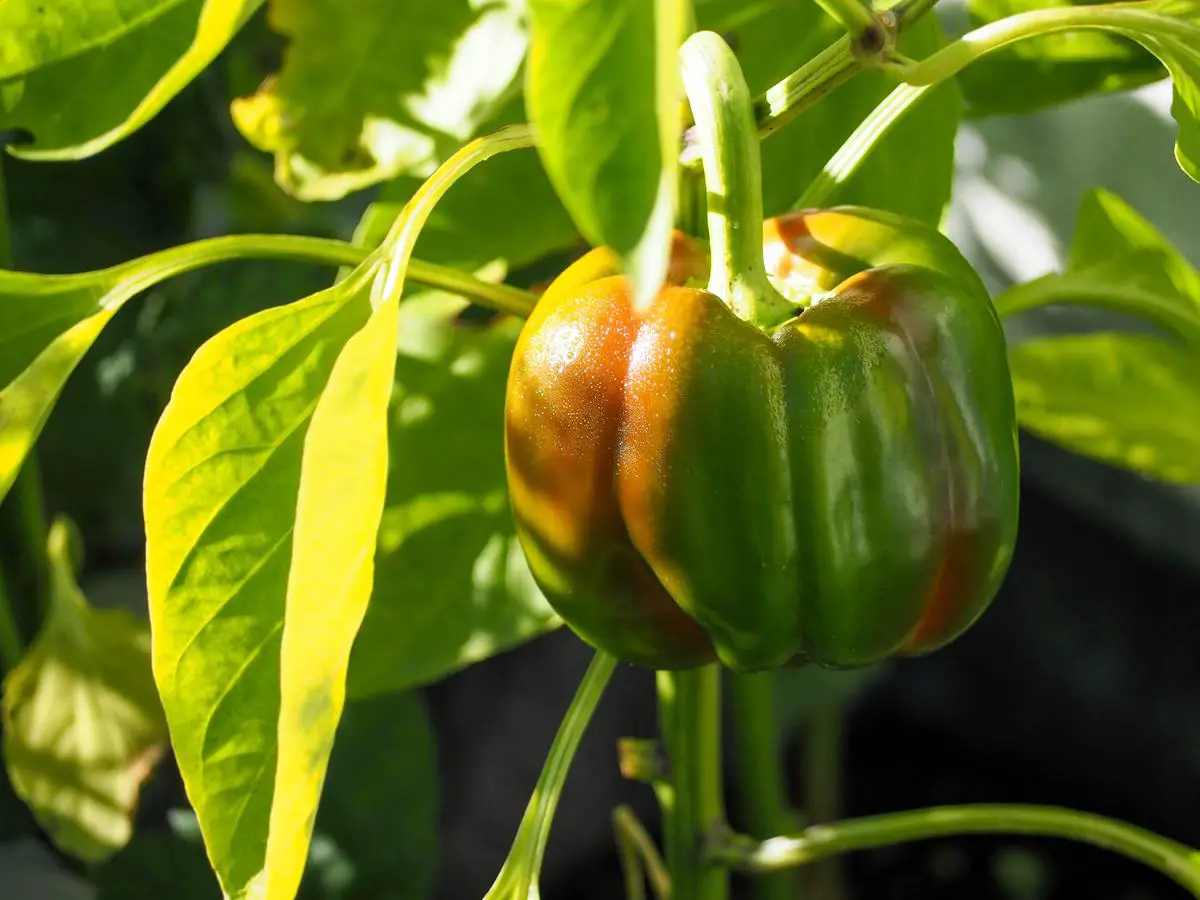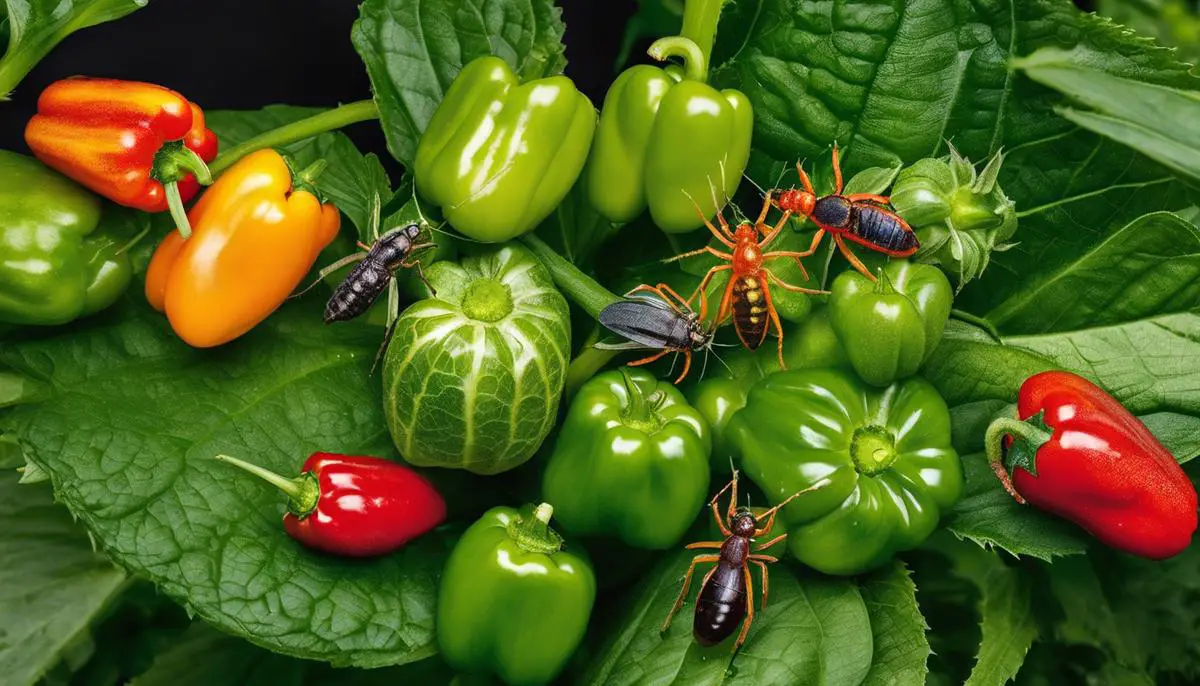Understanding the world of bell peppers isn’t just about their diverse colors and flavors. Equally as significant is the understanding of the myriad pests and diseases that pose a threat to these vibrant plants. As hobbyists, enthusiasts, or even simple homeowners who love to nurture a garden, it’s important to be equipped with the critical knowledge of these pests and diseases affecting bell pepper plants. From damaging insects like aphids, cutworms, and spider mites, to microscopically pernicious intruders causing bacterial spot, fusarium wilt, and anthracnose; knowledge of these plagues is integral to our gardening success. But fear not! The journey through these problematic encounters also provides sustainable solutions for their eradication and prevention. The focus will be on safe, organic methods to ensure that your garden is not only thriving but also eco-friendly.
Identifying Common Bell Pepper Pests
The Silent Saboteurs: Pests You Must Look Out for in a Bell Pepper Garden
Reader Poll: What online courses would interest you?
Bells ringing, anyone? It’s not the chapel bell but an alarm in your bell pepper garden. Bell peppers, while delightful in culinary use, are prime targets for a variety of pests in the vegetable world. Though they provide a colorful palette and spicy punch in meals, they often engage in a silent battle with the not-so-friendly guests in our gardens. Let’s peel back the curtain on the usual suspects and know how to recognize these culprits for effective action.
Bug #1: Aphids
These tiny green or black critters are typically found on the underside of pepper plant leaves. Aphids love sucking juices out of the plants, inevitably making the leaves curl and turn yellow. As they feed, they excrete a sticky “honeydew” that subsequently forms a black, sooty mold, negatively impacting photosynthesis and potentially leading to a reduced yield.
Subscribe to our newsletter!
Bug #2: Cutworms
Cutworms are nocturnal insects that ‘cut down’ young plants at the stem, hence their name. These brown or grey pests, which curl up when disturbed, are quite destructive, leaving a trail of damaged seedlings and plants in their wake.
Bug #3: Thrips
Thrips are slender, small creatures that feast on bell pepper plants by sucking their nutrients, causing discoloration and spots on the fruits and leaves. The adult thrips can be black or yellow, whereas the larvae are usually pale or yellowish.
Bug #4: Spider Mites
These miniature spiders mostly attack pepper plants in dry, hot conditions. Spider mites tend to position themselves under leaves, leading to the leaves developing yellow pinpricks. Beware, as these mites can rapidly multiply, setting a massive infestation in motion.
Bug #5: Whiteflies
Whiteflies, as the name indicates, are small, white, flying insects feeding on the undersides of leaves. Much like aphids, their feeding habits lead to the production of honeydew, which in turn attracts sooty mold.
Bug #6: Colorado Potato Beetle
Now, this is a bug that shouldn’t be underestimated based on its name. Despite the ‘potato’ tag, these orange and black-striped beetles don’t mind munching on bell pepper plants. Both adults and larvae are voracious eaters, causing severe defoliation if not controlled.
Bug #7: Slugs and Snails
Slugs and snails are common pests that feed on succulent plant tissue, including bell pepper leaves and fruits, especially during damp weather.
Knowing these pests is the cavalry marching to the rescue of your bell pepper garden. Now armed with the insights, stay vigilant, employ natural or synthetic pest controls when needed, and keep enjoying the peppy and pungent bell peppers that enliven the dishes. Happy gardening!

Eradicating Bell Pepper Pests
As avid home gardeners, we’ve all faced the trials and tribulations of dealing with unwelcome visitors encroaching upon our precious crops. Fresh on the heels of my chat about aphids, cutworms, thrips, spider mites, whiteflies, Colorado potato beetles, slugs and snails, it’s time to move forward and delve into practical solutions. Let’s pull out the organic routine sprays, pesticides and preventative techniques to evict the unwelcome intruders from our bell pepper gardens.
The ideal starting point for controlling pests begins in the seedling stage. Pepper plants grown from seeds in a regimented environment like a greenhouse or an indoor garden are less susceptible to pest infestations. These controlled conditions make it easier to manage bugs. It also promotes healthy, robust plants that are more resistant to pests.
Introducing natural predators into your garden is another effective tactic. Ladybugs, lacewings, and parasitic wasps are sworn enemies of aphids while frogs, toads, and ground beetles make short work of cutworms. Spider mites’ worst nightmares come in the form of predatory mites and ladybugs. No chemicals involved and no extra work for you – just Mother Nature doing her thing to maintain balance.
Biocontrol agents like neem oil, insecticidal soap, and pyrethrin are options when the arrival of unwanted pests crosses the incidental line. For instance, the castile soap solution can unwind thrips and aphids’ harmful plans, while a simple mix of water, vegetable oil and mild soap can deter spider mites. Keep these as rain-check options, not daily routines, to avoid disturbing your bell pepper plant’s natural ecosystem.
Diatomaceous earth is a powdery substance made from fossilized marine phytoplankton. It’s non-toxic for humans and pets but deadly for pests like slugs, snails, and beetles. Sprinkle it around your plants, and you’ll notice a significant reduction in these creatures. Just ensure you wear gloves when applying it to protect your skin from drying out.
Last but not least, employ the technique of crop rotation to prevent Colorado Potato Beetle infestations. Changing what you plant confuses the beetles who tend to populate places where they can easily find their preferred food – including our beloved bell pepper plants.
Just remember, any garden, no matter how carefully tended, will have pests. The trick is not to create a completely pest-free environment, but to manage and maintain balance, enabling your plants to thrive. By doing so, you will be ensuring a healthy, robust garden with satisfying rewards come harvest time. A little planning, a few preventative measures, and a bit of wise troubleshooting when necessary, make for a superb bell pepper harvest.

Common Bell Pepper Diseases
Beyond the world of pests, bell pepper plants are also susceptible to a number of diseases that can challenge their healthy growth and productivity. Let’s take a look at some of the most common diseases and learn how to identify the symptoms.
First on our list is Bacterial Spot, caused by the bacterium Xanthomonas campestris pv. vesicatoria. This disease often presents itself as raised, blister-like spots on the leaves, stem, and fruit. The spots often develop a yellow halo and may become necrotic, causing the tissue to die. One effective prevention technique is to use disease-free seeds and transplants.
Next, we have Phytophthora Blight, a fungus that causes wilting, leaf drop, and fruit rot. Look for water-soaked spots that turn brown and have a white, cottony growth. The good news is that there are resistant varieties, and employing good watering practices can control this disease. Avoid over-watering and ensure proper drainage to prevent waterlogged soil, which the fungus thrives in.
Anthracnose is another fungi-based threat to bell pepper plants. This disease causes round, sunken spots on fruit. These spots usually contain tiny black dots and may expand to cover large parts of the fruit. Crop rotation and removal of infested plants are recommended practices to prevent the spread of this disease.
Fusarium Wilt and Verticillium Wilt are soil-borne diseases that can afflict your bell pepper plants. They cause yellowing and curling of leaves, followed by wilting and browning of plant stems. Fungus-resistant varieties of bell pepper plants are the best defensive approach against these diseases.
Blossom end rot is a physiological disorder caused by a calcium imbalance in the pepper plant. Dark, sunken spots appear at the blossom end of the fruit, hence the name. Maintaining a well-balanced soil pH and sufficient water supply help prevent this disorder.
Lastly, there’s Mosaic Virus, usually spread by aphids, causing mottled light and dark green patterns on leaves and stunted growth. Unfortunately, there’s no treatment for this virus, but a good practice is to eliminate the infected plants and control aphid populations.
In conclusion, facts are your armor in this battle against diseases. Knowing what to look out for and how to deal with it can significantly improve your bell pepper plants’ chances of a healthy, bountiful harvest. As they always say, prevention is better than cure. Stay keen, stay green!

Photo by gregdaines1990 on Unsplash
Managing Bell Pepper Diseases
Maintaining the health and vitality of your bell pepper plants goes beyond just managing pests. An often overlooked aspect of plant health revolves around the prevention of diseases that can affect your bell pepper crop.
First on this list is Bacterial Leaf Spot. This menacing disease is represented by small, dark, water-soaked spots appearing on both sides of leaves, leading to the leaves eventually falling off. To prevent this, always try to avoid wetting the foliage when watering, and furthermore, practicing crop rotation can limit the persistence of this disease in the soil.
Overall watering practices play a crucial role in managing another disease known as Phytophthora Blight. This nasty condition can result in wilting, stem and root rots and fruit spots. The key here is not to overwater and ensure proper water drainage, as the fungus thrives in waterlogged conditions.
Staying on topic with watering, overwatering, in combination with excessive nitrogen fertilization, can also lead to a third bell pepper disease called Anthracnose. This fungal disease causes sunken spots on pepper fruits. Be sure to water lightly and apply balanced fertilization.
Two more diseases, Fusarium Wilt and Verticillium Wilt, can also plague bell pepper plants. Both of these are soil-borne diseases that result in wilting and yellowing of plant sections. For these, the best lodge of defense is to avoid planting bell pepper plants in diseased soil and to always select resistant varieties.
A common bell pepper ailment is Blossom End Rot. Though not a disease per se, it manifests as dark, sunken spots on the fruit caused by a calcium deficiency. Maintaining a consistent watering pattern, applying calcium-rich fertilizers, and planting in well-drained soils can help prevent this condition.
Lastly, the Mosaic Virus is another one for the list; a disease characterized by mosaic patterns and distorted growth on leaves. Afids are known to spread this virus, so keeping aphid populations under check will help in managing this disease.
All in all, monitoring your plants regularly for early signs of disease and taking corrective action early can go a long way in maintaining a healthy and fruiting bell pepper plant. Let’s continue nurturing our green thumbs, continue learning, and most importantly, continue enjoying the process of growing your own food. Happy gardening!

As we traverse the dynamic world of bell pepper gardening, we come to understand that it’s not just a peaceful endeavor but also a venture requiring vigilance and informed actions. Acknowledging the true enemies of our garden – the various pests and diseases, and devising an effective plan to combat them, are the true hallmarks of a successful gardener. Embracing thoughtful practices, like spacing plants correctly and opting for disease-resistant varieties, alongside minimalist and safe application of chemical pesticides, can make a world of difference. The beautiful dance of nature is a complex yet rewarding one that invites us to learn continuously, allowing us to enjoy the fruits of our labor, or in this particular case, the delightful crunch of a vibrant, healthy bell pepper.

